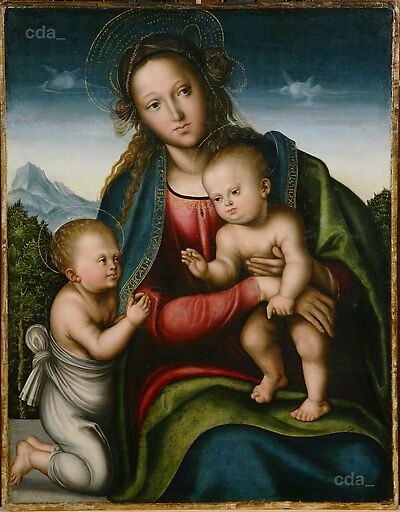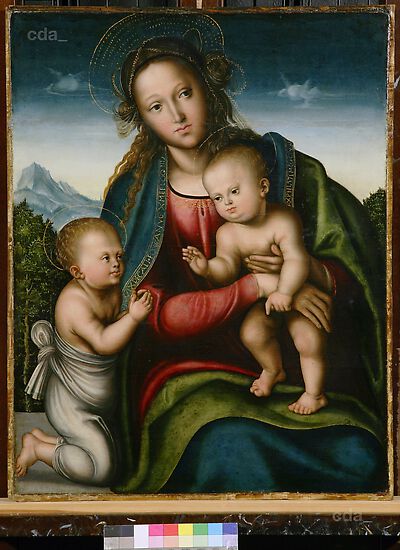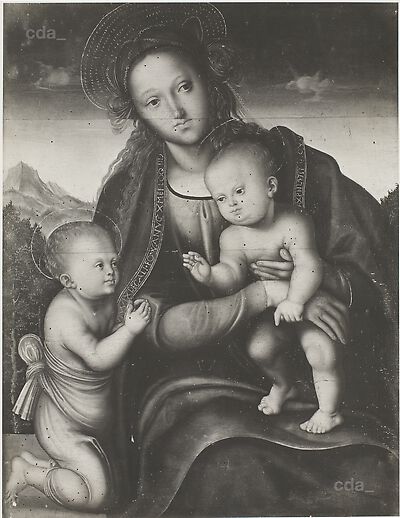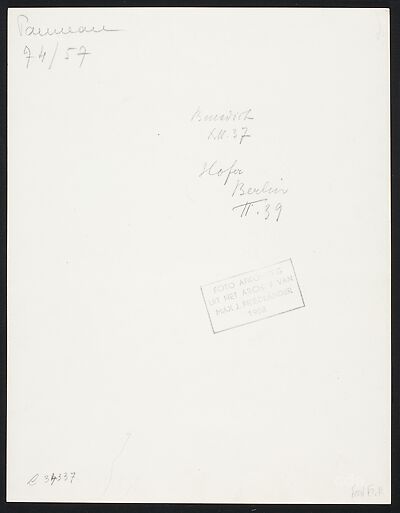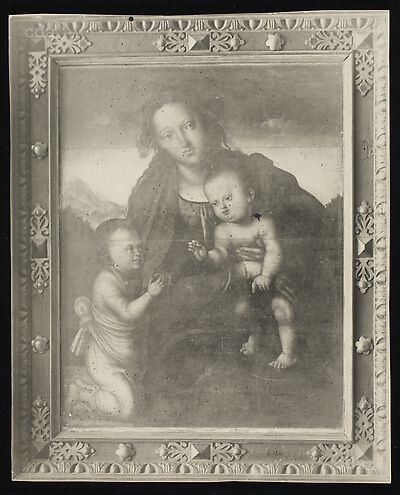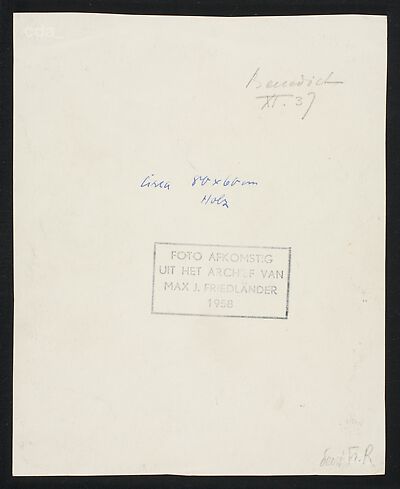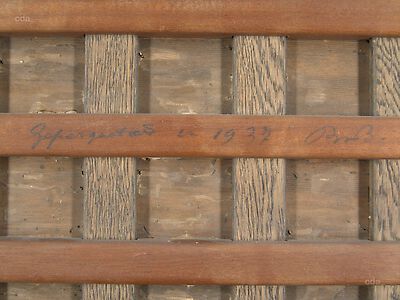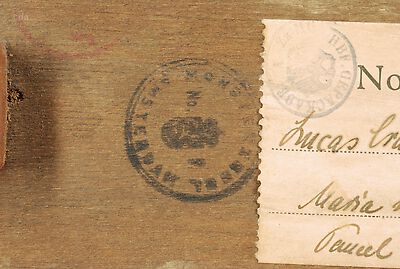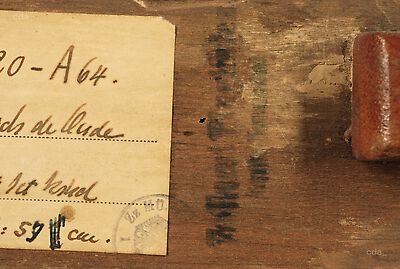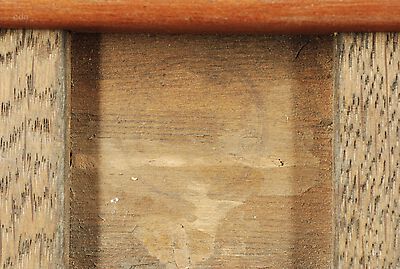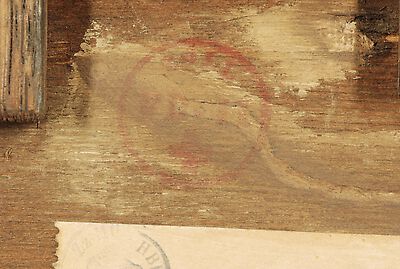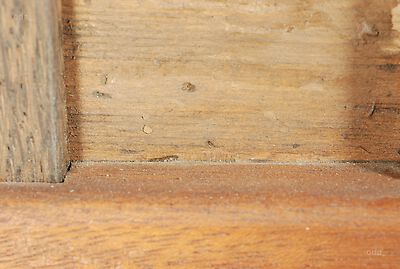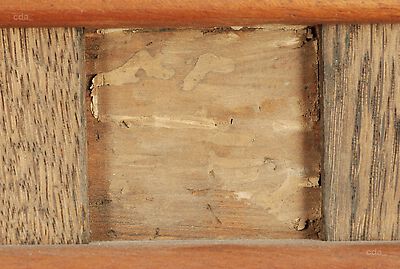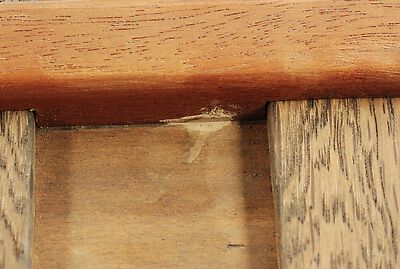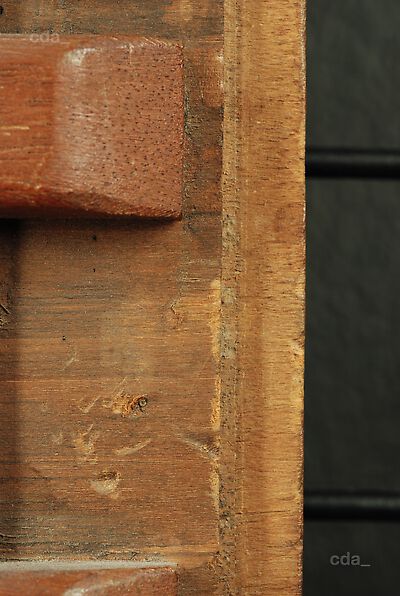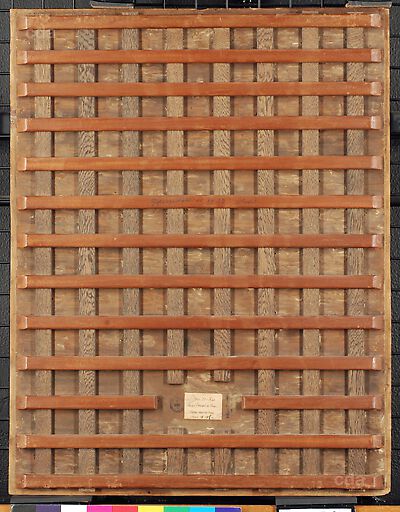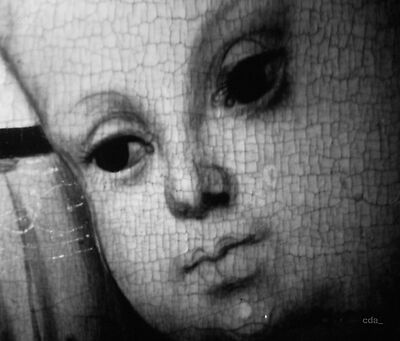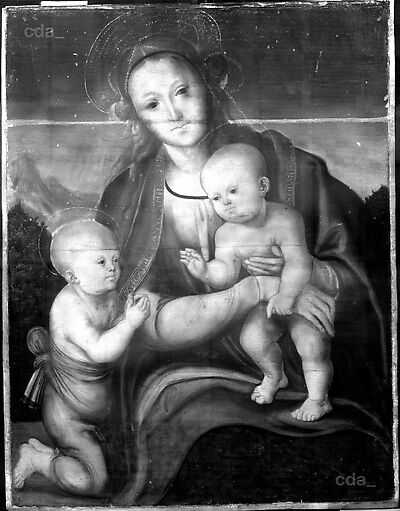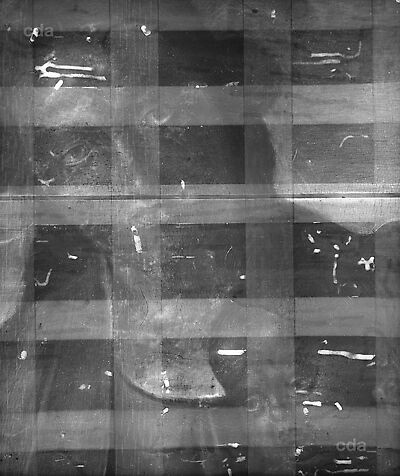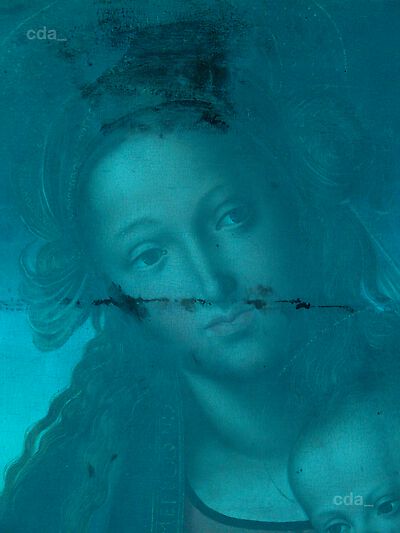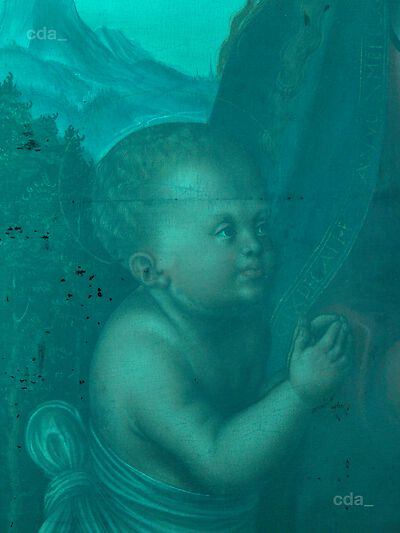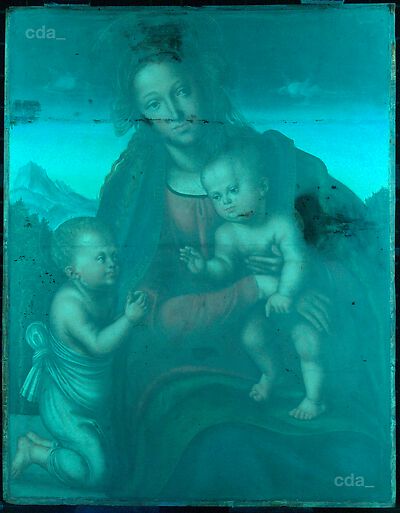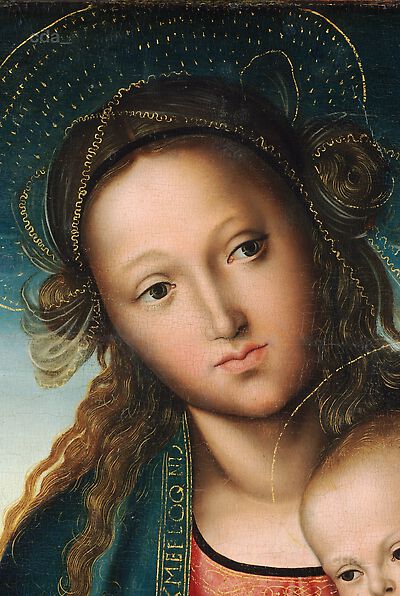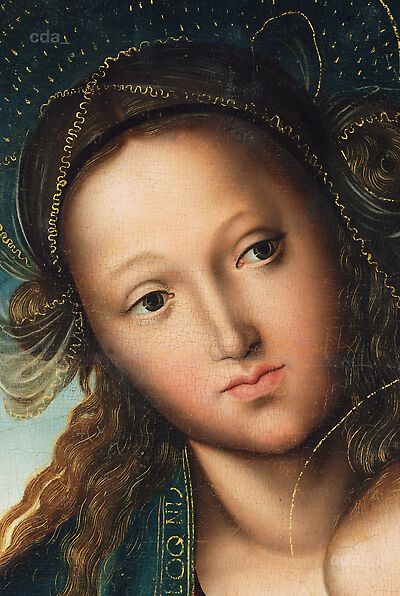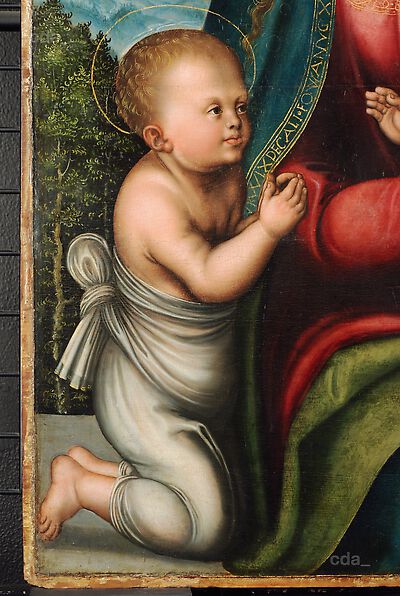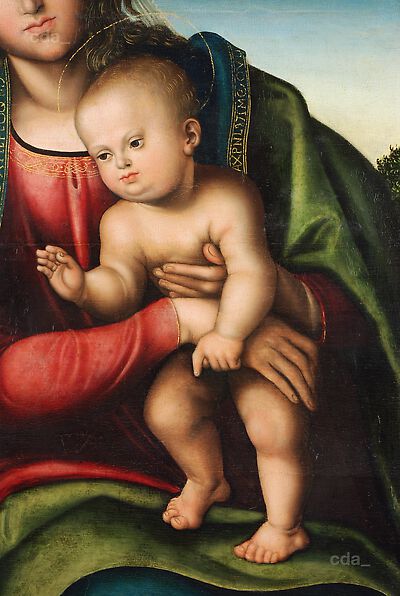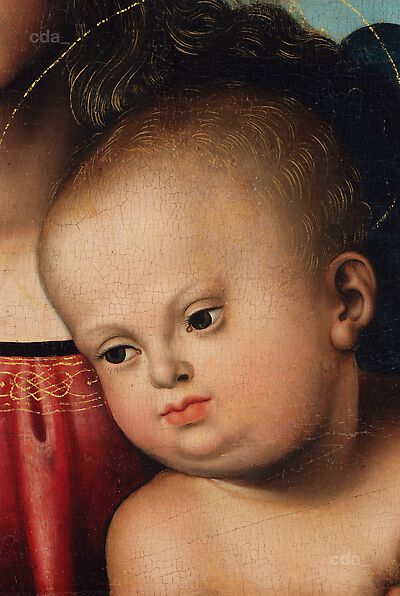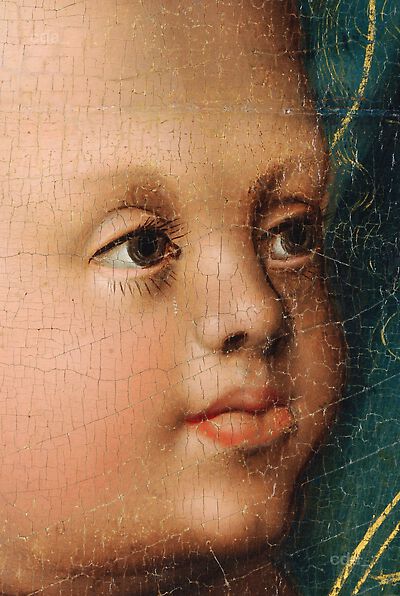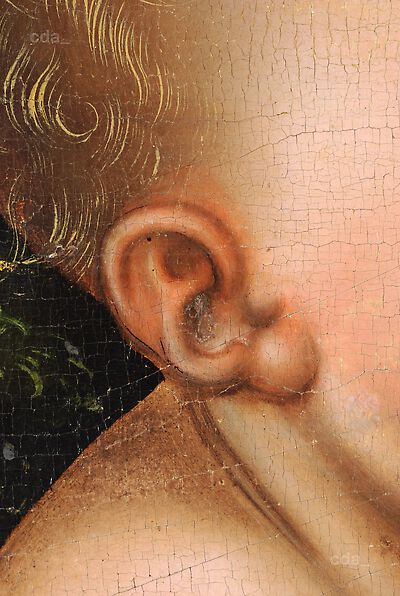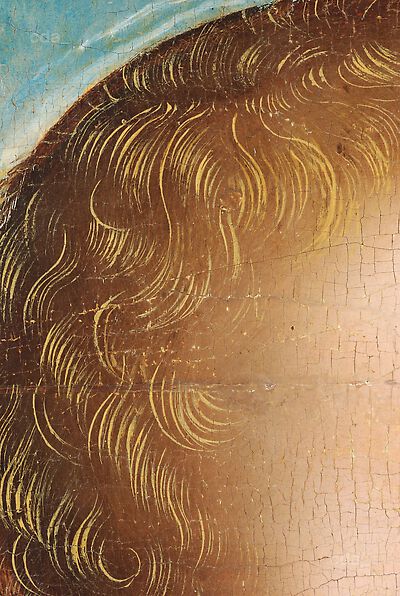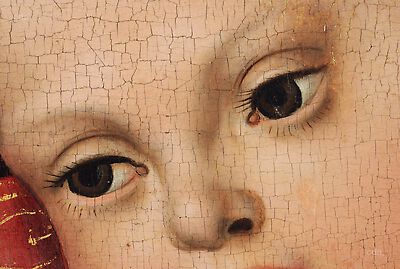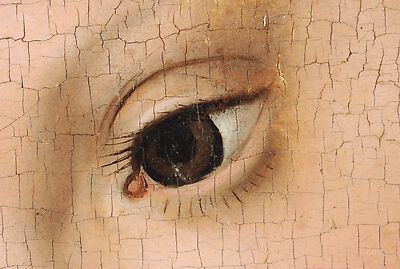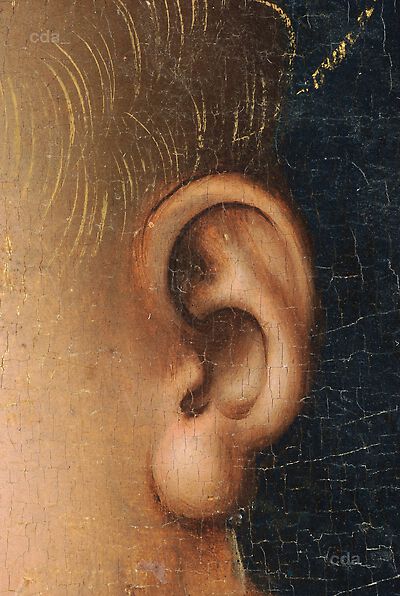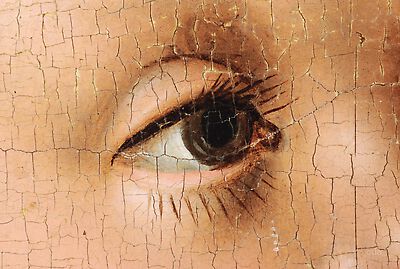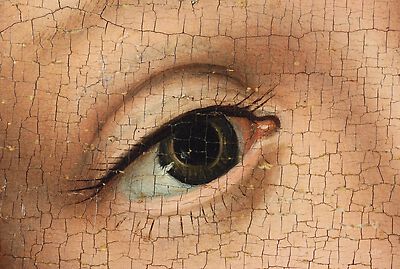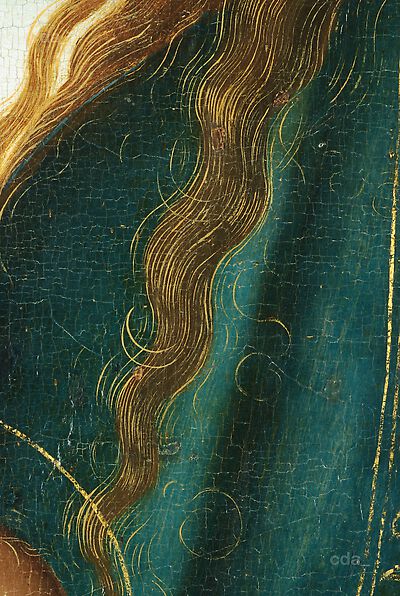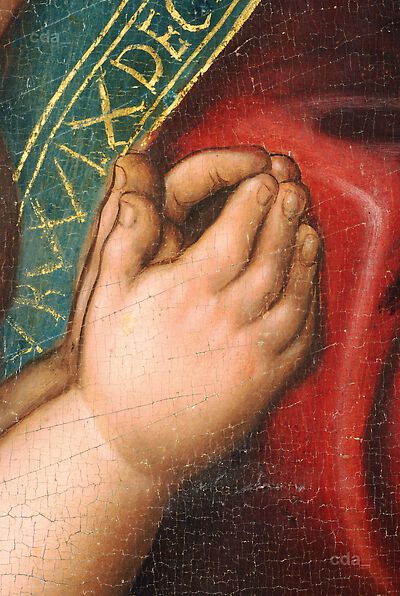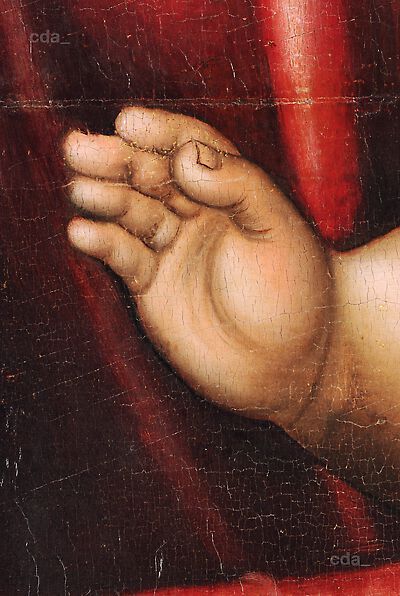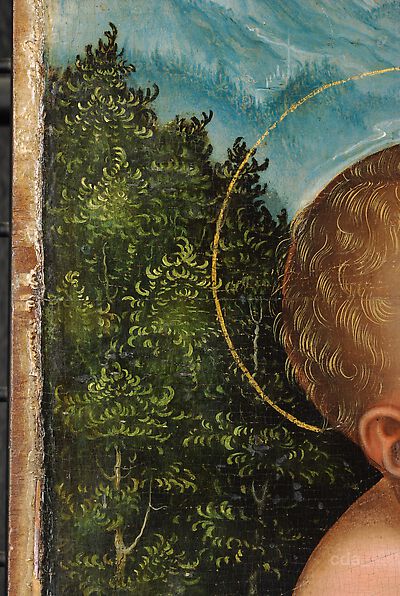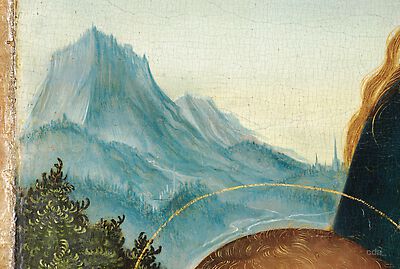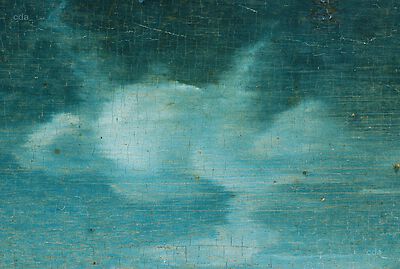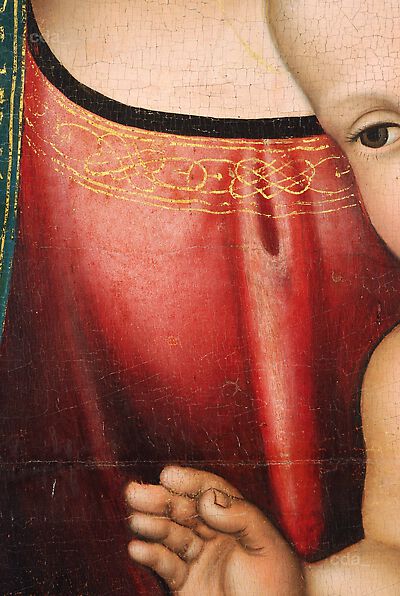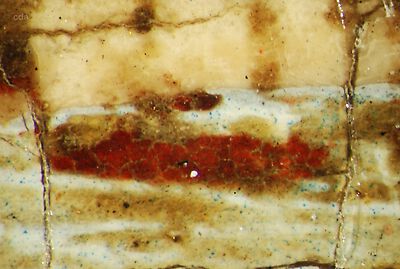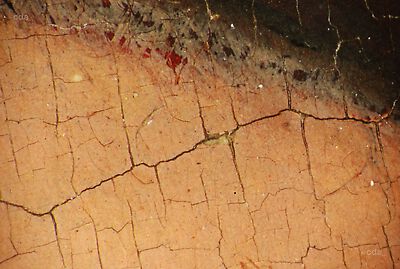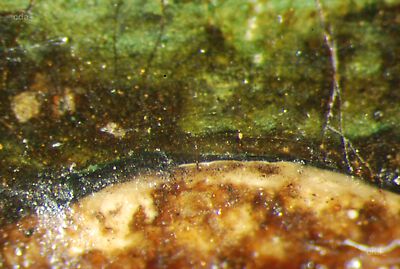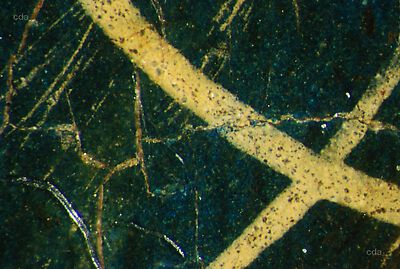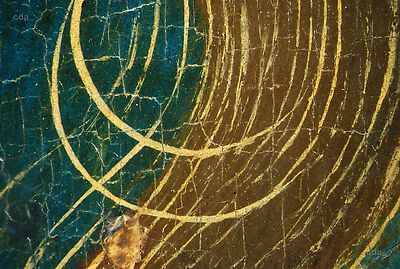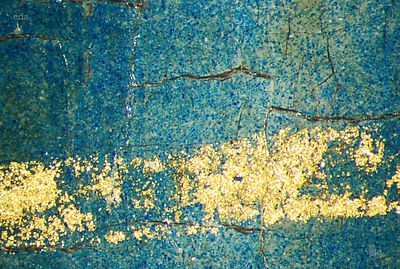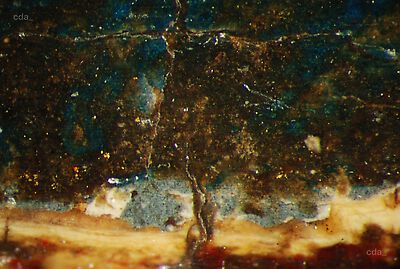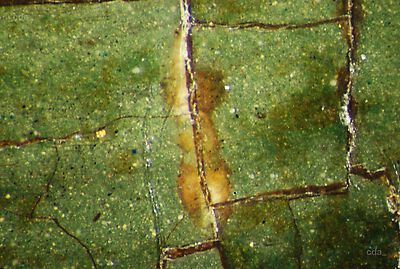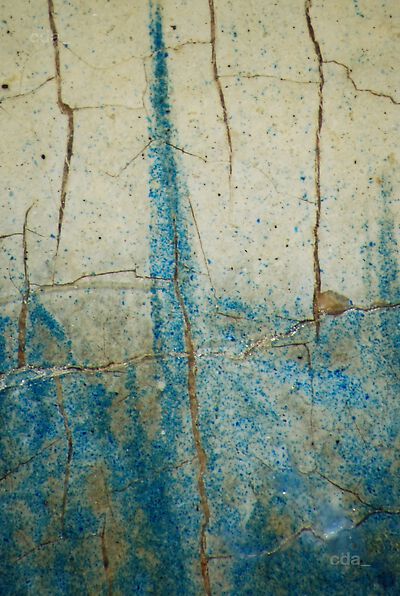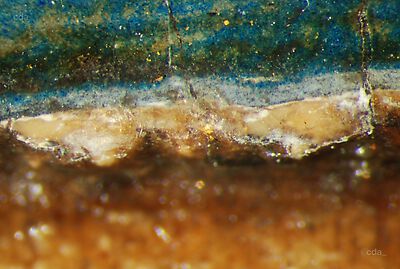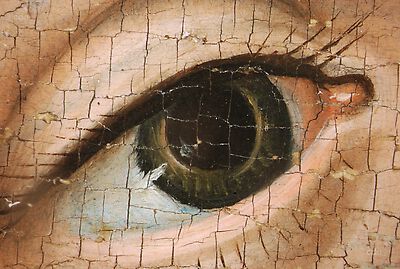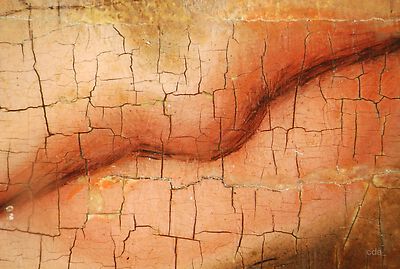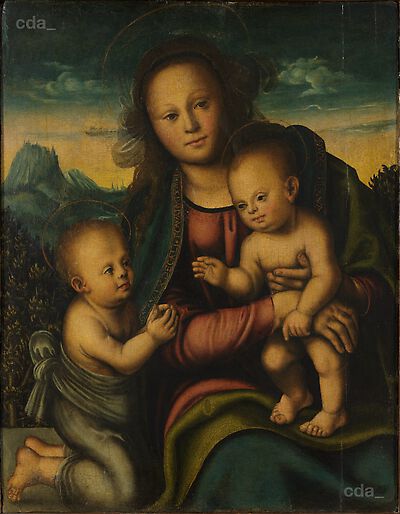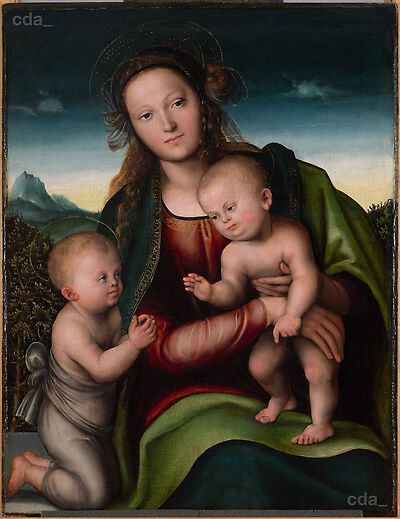Support
The wooden panel (75.9 x 59.4 x 1 cm) consists of five boards with varying widths (left from the top: 17.5/19.3/18/11/10 cm; right from the top: 18/18.4/19/12.7/7.8 cm). It is made of a soft hardwood, probably lime. The boards are aligned and glued horizontally, that is lateral to the greater expansion of the panel. The edges of the boards do not run parallel to each other. Two areas of damage in the wood were filled with small wooden inserts. An application of tow or canvas over the joins could not be identified. A c. 1.2 cm wide rebate has been preserved along all four edges. The panel was later thinned slightly on the reverse and cradled. It could not be established whether the dimensions have been subsequent altered.
[Heydenreich, examination report 2008, 1]
Ground and Imprimatura
The panel exhibits a white ground application; it appears to be a chalk ground. The application does not extend to the edge, that is to say the panel was fitted in a frame during this stage of the process. In the area of the junction between the panel and the original frame there is a barbe. Its raised form suggests that the smoothing process also proceeded in the frame. The original frame has not been preserved. The rebate retained on the reverse of the panel indicates an original frame and panel construction (engaged frame). Thinned to c. 5 mm the edge of the panel was inserted into the grooves in the frame members. Traces of gold and red lake embedded in the paint layers in the area of the barbe, suggest a polychromed frame.
Between the ground and the paint layers there is a white to slightly light red pigmented interlayer (imprimatura). Examination under the stereomicroscope revealed that it may be an admixture of lead white with a small quantity of red lead. White and light red imprimatur were wide spread in 16th century painting but also in later periods. Analysis has helped identify white and pink toned imprimatura (lead white, red lead) on numerous paintings from the Cranach-workshop.
[Heydenreich, examination report 2008, 2, 3]
Underdrawing
Infrared reflectography revealed an underdrawing executed on the ground in black ink. A brush probably served as the drawing instrument. The drawing of the figures attempts to fix the contour lines and essential inner forms with long sweeping strokes. In doing so bodies, faces and robes are confidently and relatively accurately defined. Only in some details is a free and intuitive drawing evident, like for example the feet of Christ. The underdrawing was probably executed employing a relatively precise template, which was transferred to the ground employing a drawing medium that can no longer be made visible (carbon, chalk).
Numerous small deviations are visible between the drawing and the subsequent paint layers. Christ's head and neck were originally conceived slightly slimmer and made broader during the painting process. Furthermore the Virgin's right hand was conceived at least a finger's width shorter than in the final version executed in paint. Also the right eye of the Virgin and the left eye of Christ as well as the left hand of the Virgin were shifted slightly further down in the painted version.
[Heydenreich, examination report 2008, 2-3]
Paint Layers and Gilding
Flesh paint
The flesh paint was laid in with a light admixture of lead white and vermilion. Shadows were modulated with semi-transparent brownish-black glazes and highlights were applied with a lighter flesh paint. The x-radiograph records the rapid modulation of the facial features. The absorption pattern appears comparatively weak, that is to say the modulation of the forms and the lighting was essentially achieved employing a routinely used admixture for flesh paint combined with the gradual shading of shadow, rather than the successive application of light flesh paint in layers.
The eyes of the Virgin are represented with a greenish-grey iris and wide open pupils, each with a crisp flashing highlight. The eyeballs contain in addition to white a considerable amount of blue pigment (appears to be azurite). The eyelids appear to be outlined with pink and brownish-black paint. The eyelashes are very fine lines that were added with comparative ease.
The hair was initially laid in with brown paint over which yellow strands were drawn. Glassy inclusions in the yellow paint and its strong absorption of x-rays suggest the use of lead-tin yellow. In some areas short dark yellow hair appears to have been overlaid with long, curved, light yellow strands of hair.
[...] The x-radiograph of the head of the present Virgin confirms, that the modulation of the flesh was carried out with both routine and rapidity. The execution of the eyeballs with an admixture of lead white and azurite has already been identified in some of Cranach's earliest works. This technique was quickly abandoned in Wittenberg as the workshop enterprise grew.
Draperies
The Virgin's blue robe was initially modulated with a grey underpaint. Subsequently the blue paint was applied in strokes and a stippling technique. In contrast the green lining of the coat does not exhibit a grey underpaint, but was modulated in green tones, shaded in the shadows with a grey to black admixture and finally harmonized with a green glaze. Similarly the red robe is modulated in colour and fully formed with a red glaze.
The present painting and the 'Virgin and Child' in the Thyssen-Bornemisza Collection (about 1512/14, FR30) are the earliest works to exhibit a grey underpaint in the Virgin's robe. Subsequently this method became a characteristic practice of the Wittenberg Court painter's workshop. A particularly intense colour was achieved by employing this grisaille-like modulation, which allowed a more nuanced gradation of light and shadow and at the same time saved on materials.
Sky and Landscape
The sky and part of the background landscape are underpainted with grey (white and black pigments), like the blue robe. A gradual gradation of tone between the zenith (grey-black) and the horizon (white) can be observed. The blue pigment was subsequently applied with both brush strokes and a stippling technique. It appears to be a fine-grained azurite. The blackish-blue sky is primarily the result of the blackish-grey underpaint. The horizon appears to brighten up from a pink to yellow tone (appears to be lead-tin yellow). The clouds are painted wet-in-wet and the contours have been blended with a soft brush.
The grey underpaint of the mountains on the left edge represents them slightly higher than they are in the final painted version. The distant ridge of hills was stippled in blue paint and a light blue silhouette of a tower was applied with a pointed brush. The group of trees in the middle-ground was executed in different green admixtures over a black underpaint, and subsequently finished with a green glaze. The grey underpaint of the sky has already been identified on numerous works from Cranach the Elder's viennese period and the method was frequently used in the Wittenberg workshop. Likewise the use of different brushes and paint consistencies as well as different methods of appplication are characteristic of the practice employed by the court painter and his workshop. [...] The blending of crisp contour lines with a soft haired brush, like in the clouds on the present painting, is a characteristic feature, which can be observed in the representation of stony ground on numerous paintings from the Cranach workshop. It is striking that in comparison with other works the foliage seems to have been executed rather mechanically.
The x-radiograph confirms that the painting process was precisely planned and executed without any major deviations. The borders between single areas of colour had already been established during the underpainting stage. Significant changes or corrections during the painting process are not apparent.
Shellgold Application
The painting process was completed by setting select calligraphic accents. The haloes, as well as the borders of the veil, the robe and the dress were executed with a brush application of shellgold, that is to say gold ground and mixed with a binding medium. Compared with other guilding techniques employed by the Cranach workshop the delicate shellgold drawing is relatively rare and yet at the same time one of the longest practiced techniques. It can be found both on the 'Crucifixion' in Vienna from about 1500 and on a 'Crucifixion Altarpiece' (FR377A) created 40 years later. Generally it served to represent haloes, borders and hems.
[Heydenreich, examination report 2008, 3-5]
Framing
Traces of gold and a red glaze embedded in the paint in the area of the barbe suggest an original polychrome frame. The present frame is probably from the first half of the 20th century.
[Heydenreich, examination report 2008, 2]
- examined by Gunnar Heydenreich
